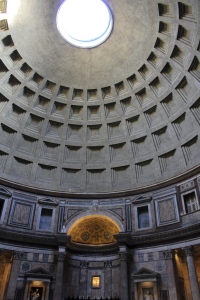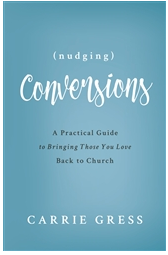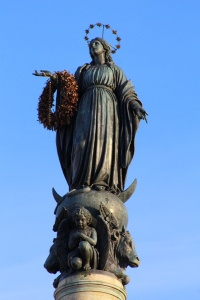By Carrie Gress, Ph.D.

Long before I learned about Pontifex University, I was thinking about culture and beauty, and their relationship to God.
One of the struggles most Catholics face is that members of their family are away from the Church. The reasons for this are legion, but the solutions aren’t as complicated as most people think. My book, Nudging Conversions: A Practical Guide for Bringing Those You Love Back to the Church, looks at what is actually effective in when it comes to helping our loved ones come back to the faith. One chapter in particular emphasizes the role of culture, and how it can be a much easier route to starting a conversation about faith than apologetics. While apologetics has its place, starting with culture reaches deeper into a soul because it goes beyond shallow day-to-day realities, and stirs that interior place where we all thirst for meaning, happiness, and wonder. Authentic culture, pointing beyond itself to God, opens the door to all of these.

Here’s more from Chapter Seven:
Culture is an abstract word that can often be hard to wrap one’s head around. During the two years I spent researching it for a doctoral dissertation, I heard a wise priest articulate it very succinctly: “Culture is God’s love made visible.” After I let it sink in for a while, it occurred to me that what most consider historically the heights of culture in music, poetry, literature, clothing, architecture, and art are all beautiful. They are not tawdry; they do not denigrate the human person; and they aren’t simply useful. They reflect God’s love for us.
Culture, like all good gifts from God, is meant to be shared. No architect expects his work to merely be seen by just one person. No symphony practices tirelessly just for itself. Talents are gifts that God gives us to enjoy, but we enjoy them even more once shared. Every gift we have been given is meant not just for ourselves, but to passed along to others. Culture is simply the manifestation of these gifts being passed along.
Somehow, over the last several centuries, the centrality of beauty, truth, and goodness to the Catholic faith – all elements that make up culture – have been lost from a collective consciousness about the Church and its history. It is an odd reality, if one thinks about it for very long, considering the churches, architecture, paintings, music, poetry, literature, and other important elements of material culture and style that have been crafted by Catholics living out their faith over the centuries. Think of Michelangelo, Fra Angelico, (Fr.) Vivaldi, Dante, Bernini, Brunelleschi, to name a few.
Like a blank canvas, culture is a neutral expression that takes on the characteristics of those who live in a given society. It can become something beautiful and compelling, or something ugly and horrifying. I am convinced this is one of the reasons why people love Europe so much, because of the remnants of Catholic culture that remain. Much of Europe was build long ago when people still had faith in God and it is reflected certainly in the continent’s churches, but also in its roadside Grottoes one still sees in Poland and Greece, or the ornately fashioned Madonnas nestled in the second-story corners of buildings, the medieval Latin phrases still inscribed on stone arcades, or the sometimes capricious, but always enthralling fountains in Paris or Rome. The list continues with the imagination, architectural feats and breath taking beauty of European churches, including the awe-inspiring soaring ceilings of Chartres Cathedral, the embrace of St. Peter’s Square, or the radiance of the stained glass at Sainte-Chapelle in Paris. (Nudging Conversions, excerpt from Chapter Seven)
 It can be easy to overlook the role culture plays in our lives and our faith. Finding ways to “breath in authentic culture” isn’t always easy, but like most things in the Catholic faith, even the very smallest things – a beautiful card, a simple piece of well-made jewelry, a striking icon, an elegantly arranged bouquet of flowers – can be enough to spark wonder and awe in a soul suffering from despair, angst, or boredom.
It can be easy to overlook the role culture plays in our lives and our faith. Finding ways to “breath in authentic culture” isn’t always easy, but like most things in the Catholic faith, even the very smallest things – a beautiful card, a simple piece of well-made jewelry, a striking icon, an elegantly arranged bouquet of flowers – can be enough to spark wonder and awe in a soul suffering from despair, angst, or boredom.
Get a free copy (+shipping and handling) of Nudging Conversions at Dynamic Catholic.
